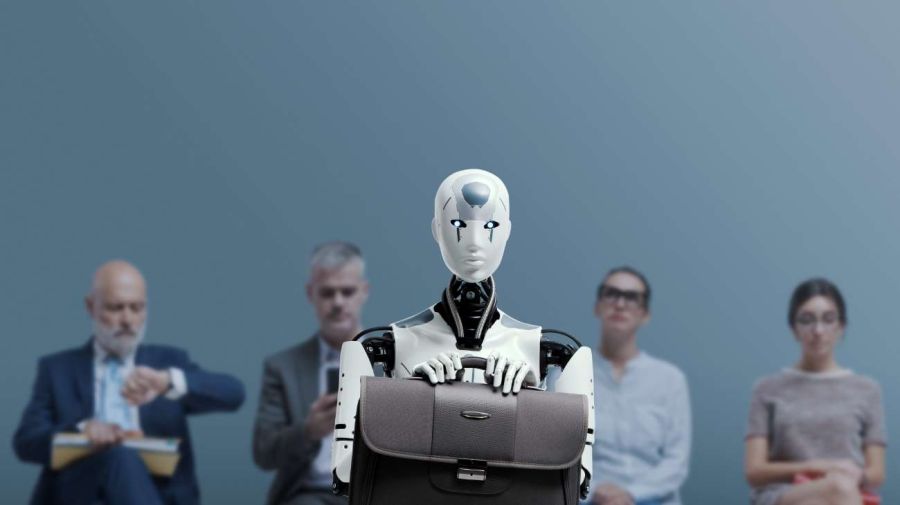The Ministry of Industry and Information Technology (MIIT) of China published a report in which it explained its plan to promote mass production of humanoid robots in 2025. At the same time, Western companies are racing to produce their own humanoids, including tesla of Elon Muskso it is believed that the business will grow “exponentially” in the coming years.
As if it were a science fiction movie or a story by Isaac Asimov or Philip K. Dick, experts suggest that even a quarter of all jobs could be affected by robotics and artificial intelligence technology.
China plans a future full of humanoid robots by 2025
Goldman Sachs, one of the world’s largest investment banking and securities groups, has predicted that the market for humanoid robots could reach worth 150 billion dollars a year throughout the world, within the next 15 years. In this sense, it is estimated that this technology is viable in factories between 2025 and 2028 and in other works a few years later, between 2030 and 2035.
The Dutch businesswoman and author Marga Hoekwriter of Tech For Good and specialist in global sustainability thinking, announced that technology “will have a positive impact in many fields”, but for this people need to become psyched up and “get prepared“.
“My biggest concern is that all of humanity spends so much time fearing, instead of accept and anticipate“said Hoek in an interview with the British media Daily Mail. In that sense, she asked for a thorough investigation into what Job functions will continue to “add value” if humanoid robots are incorporated.
“If we do not train people, if we do not anticipate, if – for example – we do not radically change school programs, we will arrive too late,” added the former CEO of By Groene Zaak. In addition to factory work, he pointed out: “Now we also have robots that react to emotions and they read the behavior.”
Work in factories and construction
This year, Amazon revolutionized the industry with the inclusion of this type of robots in its work teams. The company founded by Jeff Bezos took a step further by starting the robot testing period Digitaldedicated to moving, sorting and packaging orders placed by consumers.
“It is the most efficient robot that has ever been manufactured by humans,” said Jonathan Hurst, director of Agility Roboticsa company that developed Digital. This robotic “employee” is 1.75 meters tall, weighs 65 kilograms and is capable of carry packages of up to 16 kilogramsbut still cannot match the capabilities of humans.
“Mass production of robots at reasonable prices can be achieved with economies of scale and advances in technologies, and we envision all types of robots that support the workforce in the industry manufacturing, healthcare, construction, transportation, hospitality and more“said recently Lisa Farrell, director of business development at National Robotarium.
He also assured that these robots will be able to increase productivity, improve quality control and perform dangerous and repetitive tasks; at the same time he said that by 2035“they will have a profound impact on society and the world economy”.
Elderly care and medicine
According to the World Robotics Report 2022, China is he fifth most automated country internationally and is convinced that humanoid robots are the key pieces of an industry “with great potential.” Among other aspects, they could help in the care of older adults, in teaching children and in medical interventions.
“We will have robots that will deal with mental disordersof behavior, of children and also of adults,” Hoek commented to the aforementioned media. On this point, he expanded: “If we think about older people, robots can come into play to support and help, which also allows “people live longer”.
The first almost human robotic hand, with bones, tendons and ligaments, is already a world milestone
On the other hand, the specialist reported that robots designed to work in the area of education are a rapidly growing market and is expected to reach $3.1 billion in 2025. Among the functions that can be assumed in this task, the professor of Artificial Intelligence at the University of Manchester, Angelo Cangelosi, mentioned the work as teaching assistants in the schools.
“Some repetitive tasks can be easily performed by robots, but we will always need robot technicians who then supervise and service these robots. Gradually we will see them in some sectors supporting human workers“, held.
In the medical field, they may work in operations. “If we use robots to perform surgeries of precision, they can do it,” Hoek mentioned about a practice that has been carried out by human doctors for some time. “The human eye and fingers have limited abilities,” he concluded.
FP/ED










